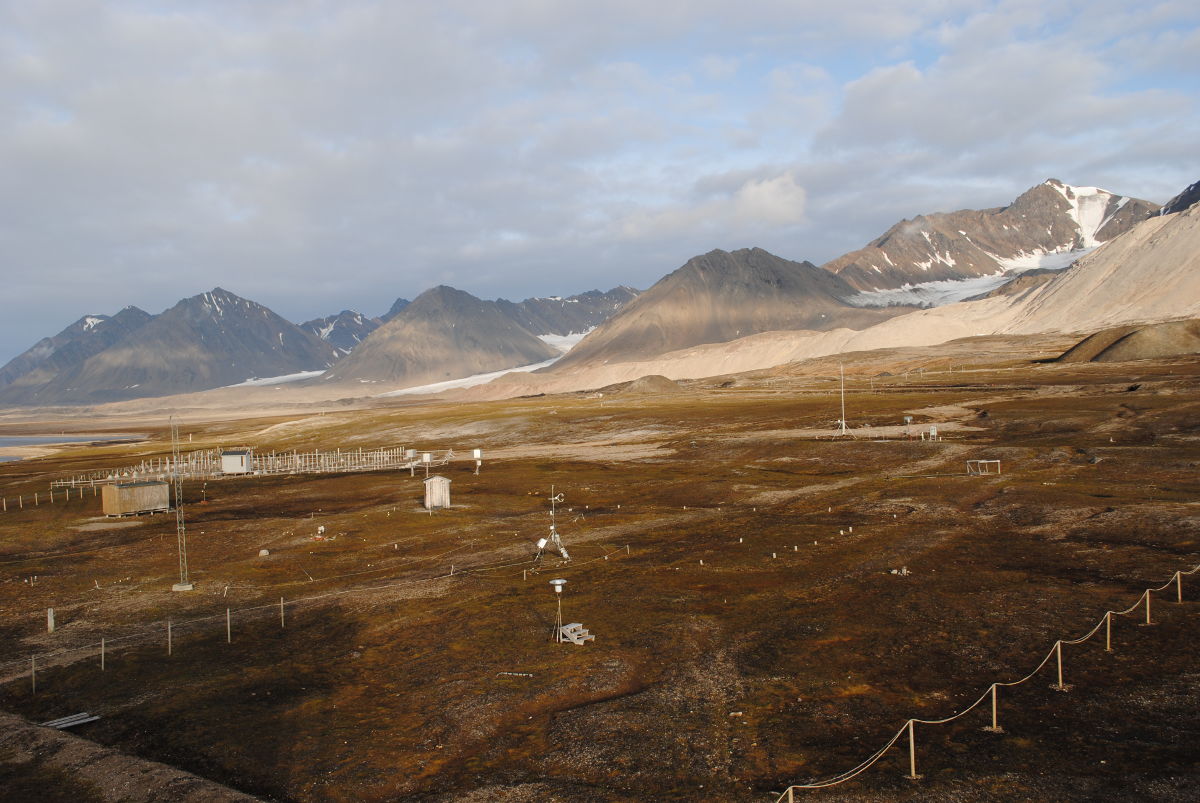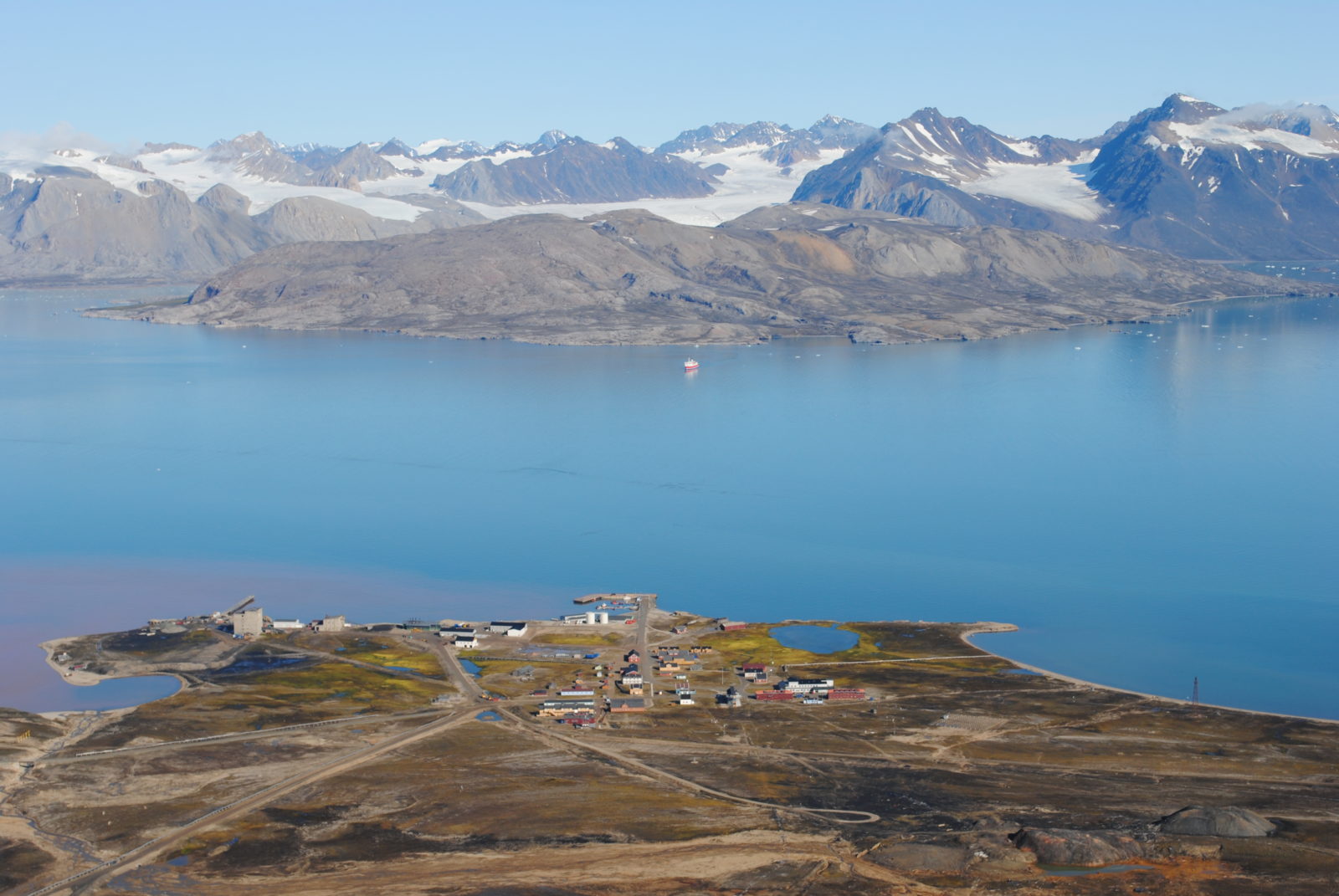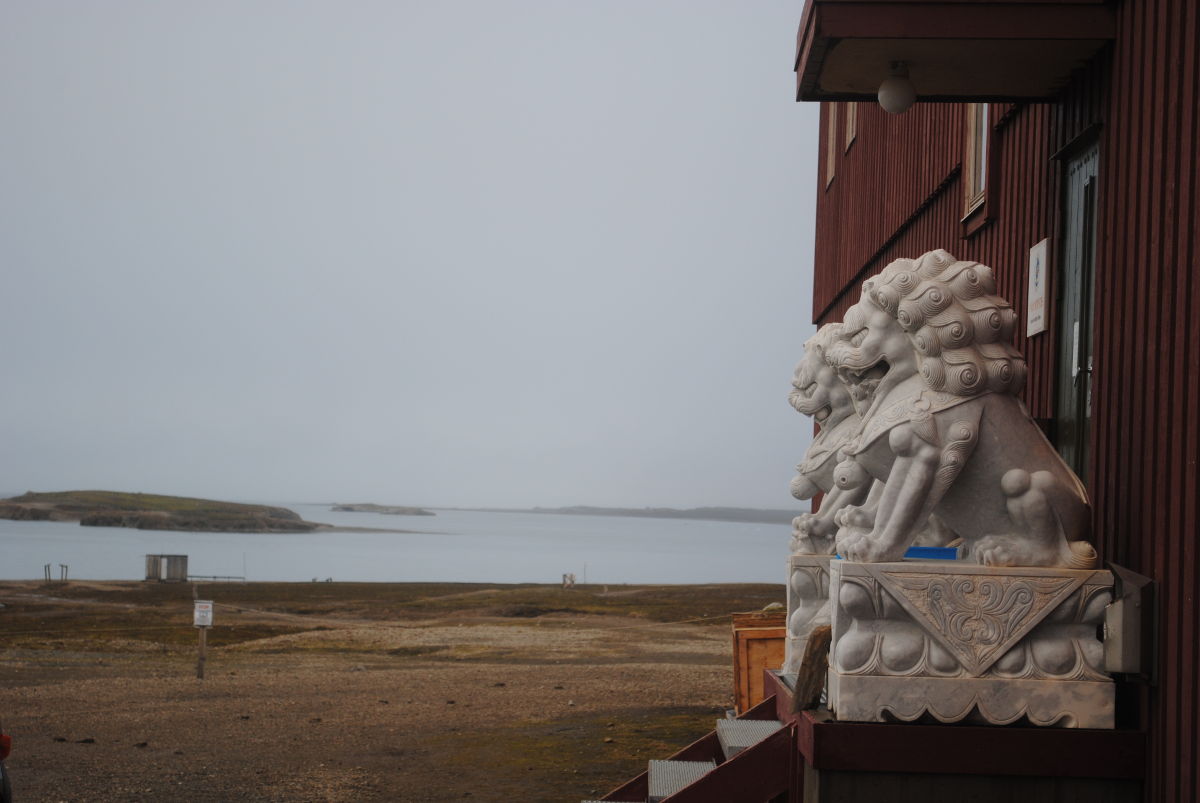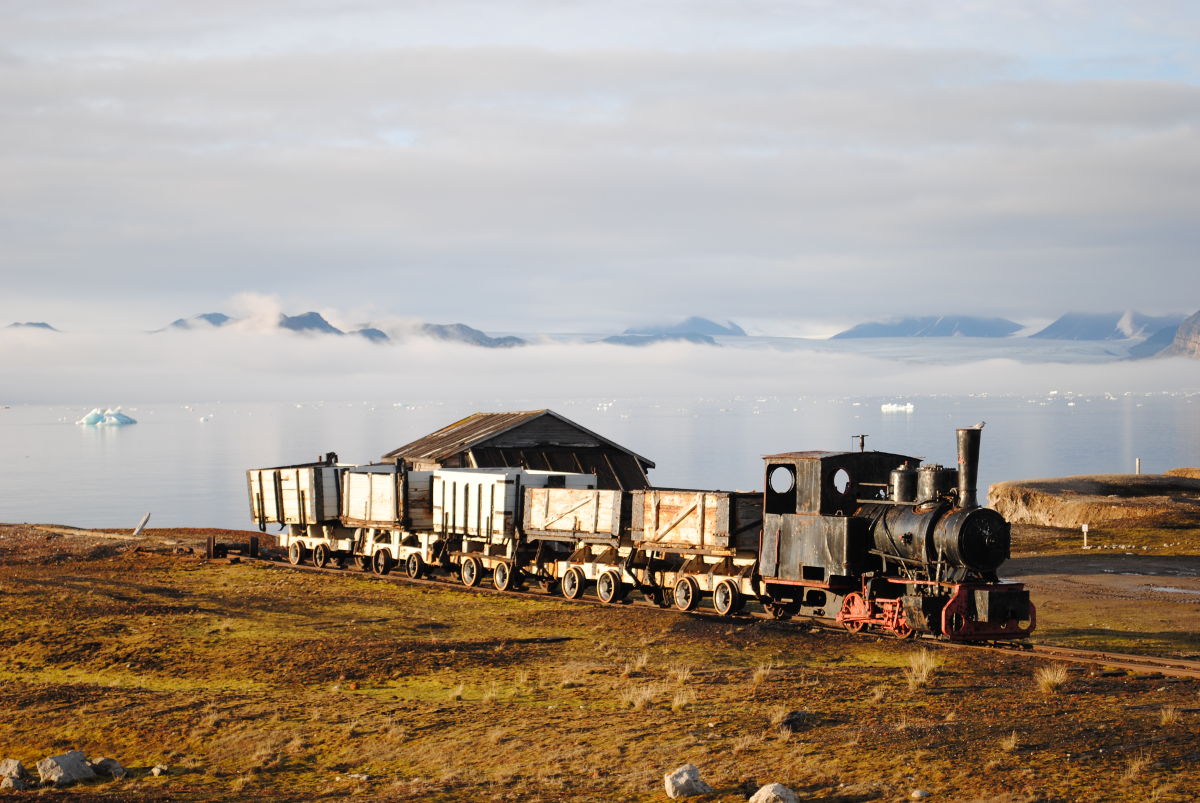Ny-Ålesund, Svalbard, Norway
The concentrated scientific gaze of Ny-Ålesund—the international scientific community situated on Svalbard, where an arsenal of sophisticated instruments collect data on diverse environmental indicators—renders the advent of the Anthropocene more visible in that remote location than among the skyscrapers and shantytowns of southern megacities. The phenomenon of Arctic amplification entails an enhanced effect of climate change in the northern latitudes, making the region a “barometer” or “bellwether” for future environmental impacts elsewhere. Hence even at 78 degrees North, Ny-Ålesund’s status as a natural science laboratory in a High Arctic environment is at risk, as ice retreats and species desert the warming Kongsfjorden region. To paraphrase the twentieth-century advocate of Arctic development Vilhjalmur Stefansson, the “northward course” of the Anthropocene ushers with it significant environmental change that not only alters Arctic ecosystems but could also have profound impacts upon entire Earth systems with geographically diffuse and disastrous effects.
Scientific instruments positioned on outskirts of Ny-Ålesund Image by Eric Paglia
Continuity with the past, however, remains entrenched, as the entire village is a highly protected cultural heritage site. Instead of housing Norwegian coalminers and their families, the coal-era wooden structures have been repurposed as the research stations of ten states representing almost half of humanity. These states—juxtaposed onto a tiny community that reaches a maximum population of 150 during the peak summer research season—proclaim themselves stakeholders in the Arctic largely due to the environmental changes occurring there. This serves as justification for establishing science stations in Ny-Ålesund, in order to make sense of processes that are expected to have significant consequences for their own homelands, including altered weather patterns in the Northern hemisphere, the Asian monsoon, and sea-level rise.
View of Ny-Ålesund from Zeppelin Mountain Observatory Image by Eric Paglia
Ny-Ålesund and the surrounding Kongsfjorden region is therefore an anthropogenic landscape in both the visible and local as well as invisible and global sense. Environmental change is apparent, whether through re-photography of retreating glaciers or anecdotal accounts of once-abundant populations of bearded seals, which have moved northward in recent years as Kongsfjorden has warmed. Meanwhile, the built environment has been transformed by the deployment of technological artifacts. Since its founding a century ago, Ny-Ålesund has been reinvented from a place of coal extraction to a cosmopolitan center for the scientific study of a changing planetary environment. Instruments installed on the Amundsen-Nobile Climate Change Tower, for instance, are sensitive enough to attribute pollutants to specific factories in continental Europe. The infrastructure of a mining community has hence been set aside as cultural relics of the old economy in favor of the environmental-monitoring instruments of science, which are widespread within and around the settlement, generating data on unseen atmospheric processes for use in climate models and other scientific purposes.
Outside China’s Yellow River Station Image by Eric Paglia
Such global effects of Arctic environmental change are cited by non-Arctic states as reason for their inclusion as observers to the Arctic Council, the primary regional governance body. The stations these states maintain in Ny-Ålesund are also enrolled in support of their stakeholder status. Yet most states elaborating their Arctic stakeholder status also express interest in the economic development of the Arctic, including of the area’s abundant hydrocarbon and mineral resources. There thus exists a paradox in the emerging global interest in the Arctic, as exploitation of fossil-fuel deposits contradicts stated concerns over climate change. The hydrocarbon legacy of Ny-Ålesund is in this sense still present, not only in the coalmining infrastructure lying dormant at the edge of the village, but also in the geopolitical discourse of an internationalized Arctic future in which the modern scientific community is enrolled.
Railway for transporting coal from mine to harbor Image by Eric Paglia
Hence, the Arctic provides a spatial aspect to the dilemma and collective decisions that humankind confronts in the Anthropocene. A glimmer of global governance on a micro level can perhaps be perceived in the anthropogenic landscape of Ny-Ålesund, where ostensibly local institutions such as the Ny-Ålesund Science Managers Committee—in which all states present in Ny-Ålesund are represented—are involved with political decisions taken in state capitals around the world. Some actors even see the potential for a “higher level of civilization” in the social and political experiment being conducted along the shores of Kongsfjorden. While the pursuit of knowledge and reason through science in a remote Arctic outpost is unlikely to usher in an era of enlightened global governance, the onset of the Anthropocene being observed there makes the imperatives of the present all the more apparent.




